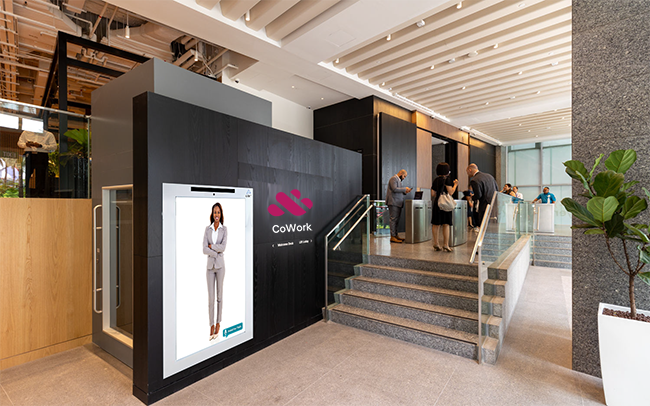By StoryFile Team
People like speaking with other people.
It’s a simple maxim, but we often lose sight of this reality when it comes to finding creative solutions to customer service problems. Across a range of in-person business environments, from retail, live sports/entertainment, and hospitality to corporate lobbies, banking and diplomatic embassies, consumers want to feel that their needs are being met personably and efficiently.
And they’re vocal about it! Almost 1 in 3 customers say they will abandon a brand after one negative customer experience. Customers are also clear about what they value: nearly 80% of American consumers say that speed, convenience, knowledgeable help and friendly service are the most important elements of a positive customer experience. So, those in-person experiences with understaffed or overworked employees who are not routinely trained and upskilled on the latest company and brand information? Companies could lose otherwise loyal customers for good.

With these consumer pressures in mind, it makes a certain sense why so many businesses have turned to chatbots to help in customer service. Chatbots offer standardization and round-the-clock service – you know with a degree of certainty when a customer interacts with your chatbot what they’ll get. Theoretically that would ease some of the pressure.
But here’s the thing: consumers are smarter than that. They know when they interact with a chatbot that they aren’t speaking with a human. If you cannot meet your customer’s needs in those chatbot interactions, then you haven’t broken down a barrier in your customer service – you’ve created a new one.
In a recent study, 86% of consumers said that speaking with a person was important or very important to their customer service experience. Chatbots do not meet this consumer demand because they aren’t able to authentically replicate the experience of human interaction – they lack the emotional signals needed to ‘sound human.’ As a result, consumers receive less emotional interaction and anticipate worse service quality when faced with chatbots.
So businesses have a problem: how can they ensure reliable, standardized, up-to-date assistance for their customers without sacrificing the human connection that is essential to brand loyalty and a meaningful service interaction?
The Virtual Human Concierge solution combines the best of both worlds. Building a concierge within Conversa provides the standardization and efficiency that businesses find appealing about chatbots and adds the human touch of an in-store experience by providing authentic interactions that keep consumers engaged and loyal, and all without the inconsistency that can come with brick-and-mortar experiences, be it long lines, understaffing, or any other issue facing in-person customer service today.
Already we are seeing businesses pilot Virtual Human Concierges of their own thanks to our platform, Conversa. The Virtual Human Concierge can transform a business’s relationship with their customers, bringing them efficient, personable service while freeing up their in-store employees to focus on the tasks that will bring the most value to their stores. The sectors a Virtual Human Concierge could support are endless and StoryFile has found success across a range of industries and environments.
It’s yet another possibility that Conversational AI Video brings to the marketplace – it lets humans do what they love to do: connect with other people.






